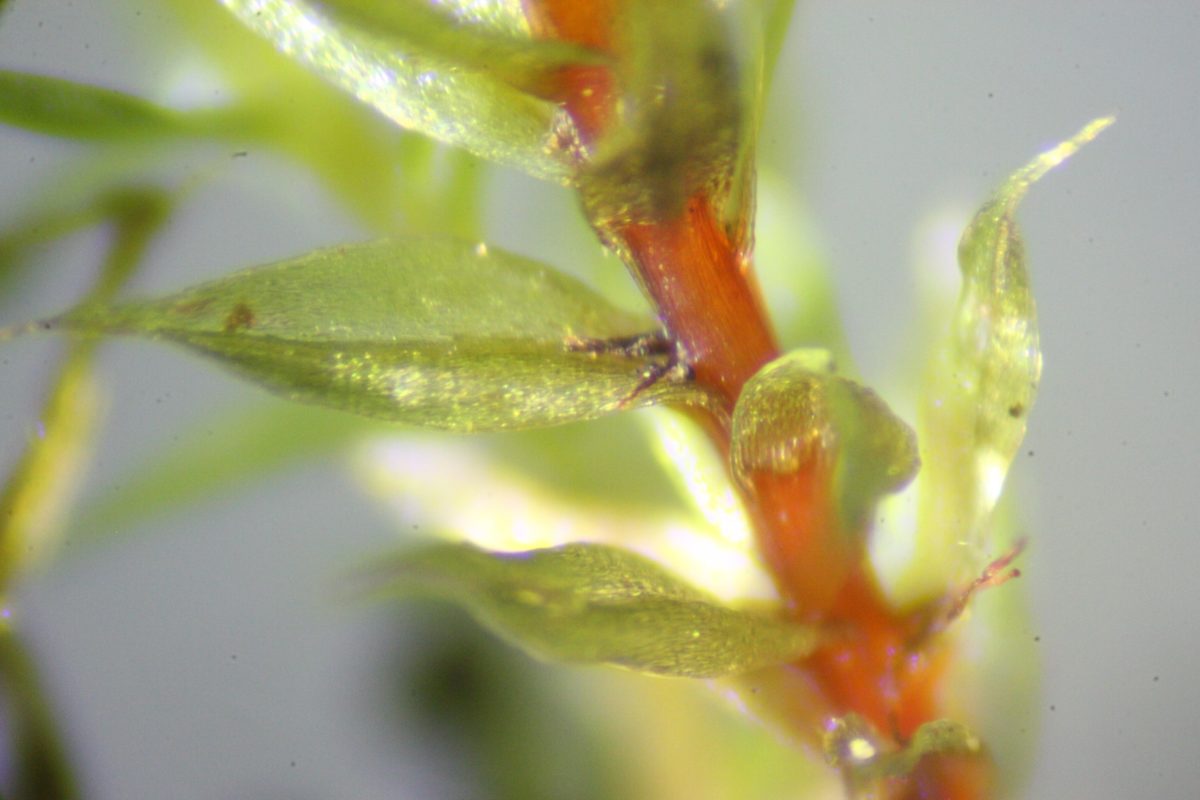Open-ground walks, and what you might see by way of mosses: in praise of a group of mosses which colonise bare soil, called “Bryums”.
Their genus name, Bryum, literally means moss….. from Latin bryon (“moss”), from Ancient Greek βρύον (brúon, “tree-moss, oyster-green”), from βρύω (brúō, “be full to bursting, abound”).
Many people enjoy walking: on footpaths, across fields…… in essentially “open ground” (as opposed to woodland or bogs or other specialist habitats). Many mosses are excellent pioneer species, which grow in open ground in bare soil, bits of mud by the side of a track, parkland paths, or anthills scuffed open by cow-kicks, ruderal places….. so a walk is a fine opportunity to see them.
One particular group of mosses which are found in open-ground places are the so-called “Thread-mosses”, the Bryums.
Bryums are pretty little mosses. Their body plan is the classic upright stem with leaves distributed evenly spaced along the stem (mostly). Some are pink-coloured, others red, and many shades of green of course, but all look ‘neat’. Most of the Bryums produce big, nodding spore capsules on tall setae, which are strikingly obvious even from a distance. There are only a handful of easily recognised common Bryum species you will meet on walks (if you look for them: bryologising is absolutely superb as a means to slow down, to take time, to notice details…..).
Bryum capillare (Capillary thread-moss) is a very common species. It grows on soil banks, waste ground, trees, logs, walls roofs, rocks. It forms short tufts or patches, with short spade-shaped green leaves, each with a fine, green hair point (of varying length) – the “capillary” of its name.
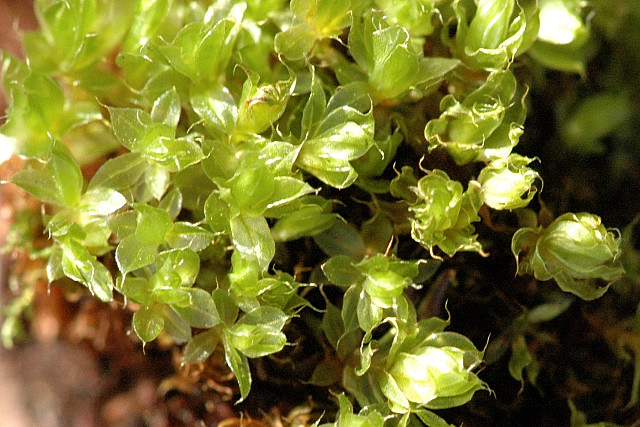

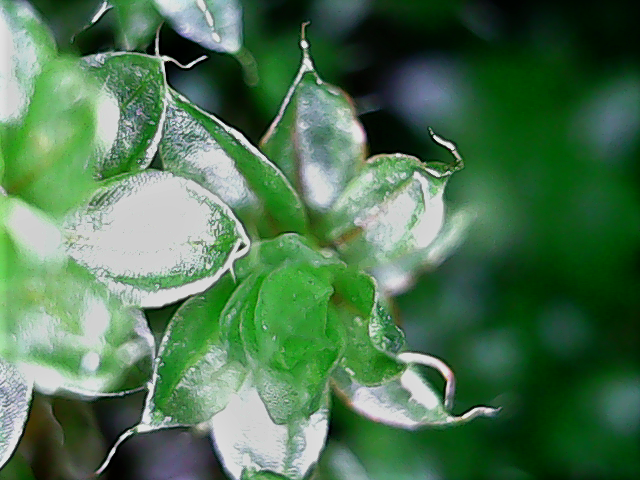
Bryum pseudotriquetrum (Marsh Bryum) is one of the larger bryums, and is the commonest bryum in marshes and other wet areas. Young plants look a bit different to mature ones, but that’s all part of the fun of puzzling over an ID. The nodding spore capsules are characteristically “bryum” shaped.
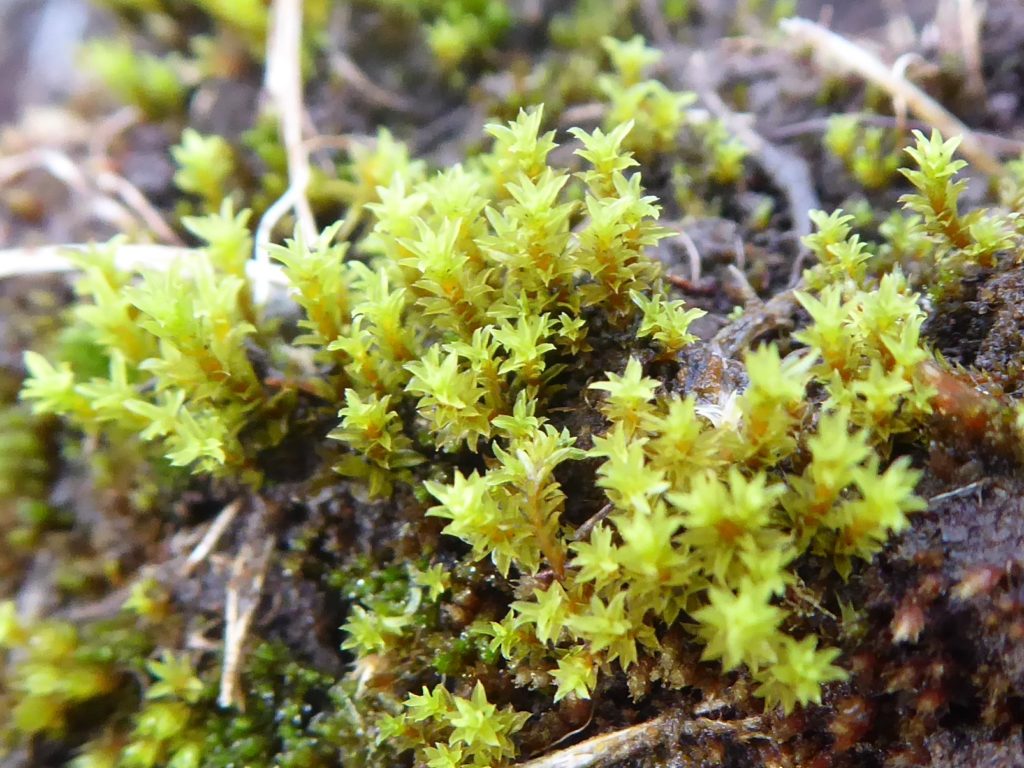

Bryum dichotomum (Bi-coloured Bryum) is one of the small, stubby bryums of disturbed soils, for example pathsides, gardens, fields – especially compacted clay soil. It also grows on wall tops. It is the commonest Bryum which shows leafy bulbils (small lumps which drop off and grow into new plants) in-between its leaves.
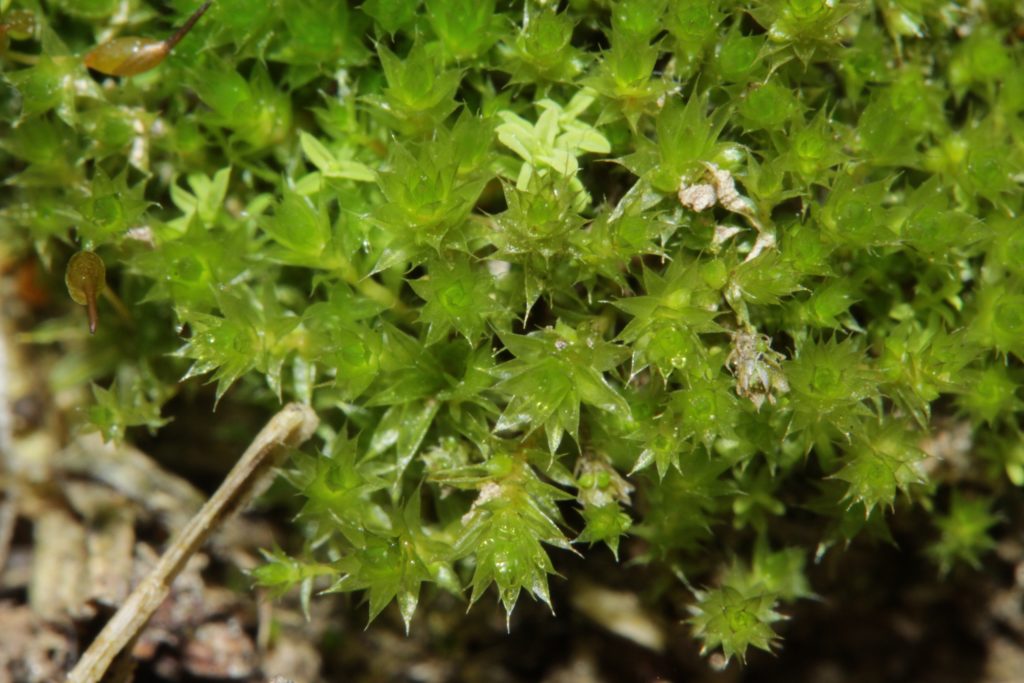
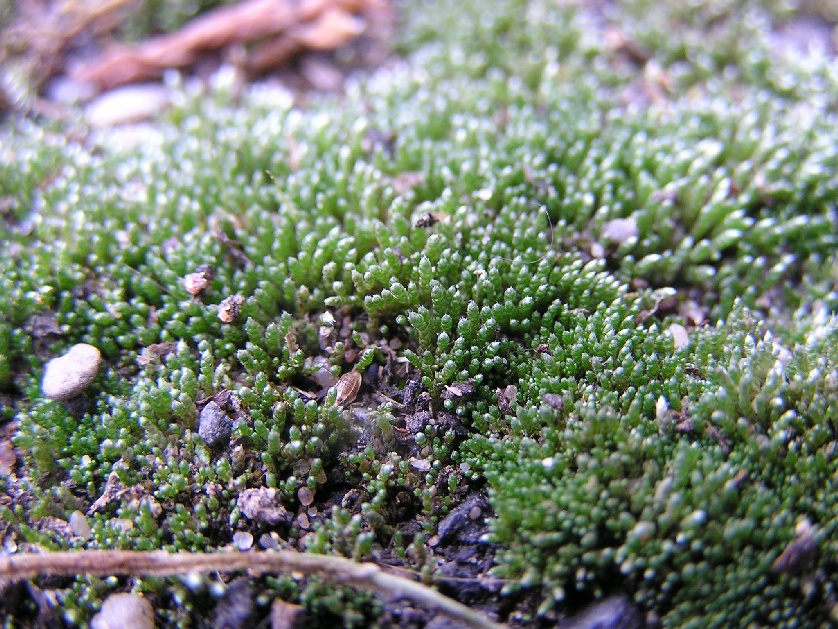
Bryum argenteum (silver-moss) is widespread and abundant in many nutrient-rich, periodically dry, disturbed habitats, such as paths, paving, sandy soil, concrete and tarmac. It has almost silvery-white, compact cylindrical shoots – unmistakable once seen. I will be willing to bet, it is growing on your roof!
Bryum alpinum (Alpine Thread-moss) is perversely named, since it isn’t at all alpine in distribution. It is a strikingly handsome red colour sometimes, and often grows in rocks in unshaded hilly areas subject to intermittent flushing or seepage. In other words, by streams where people walk! Its leaves are glossy, and the shoots form neat, tight cushions, where the bright red colour stands out from a distance.
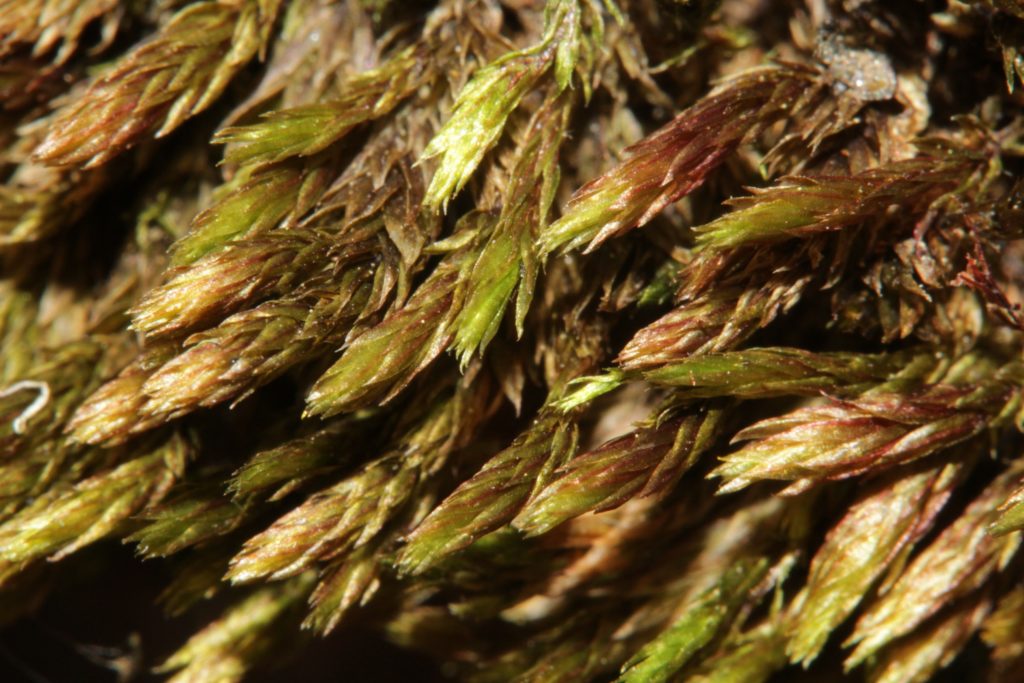
Bryum rubens (Crimson-tuber Thread-moss) is a classic bryum size and shape: small, neat, and often tinged with red. It grows on bare soil, for example beside roads, paths, arable fields, waste ground. It is by far the most common bryum with rhizoidal tuberous gemmae (lumpy balls on the “roots” which break off and become new plants). The tubers are, as its name says, bright crimson red. They occur above ground, too, so it is easy to see them with the naked eye, as tiny crimson specks on the lowest stems. It is also interesting to take a small sample of plant home, and wash off the soils gently to expose the rhizoids and their tubers.
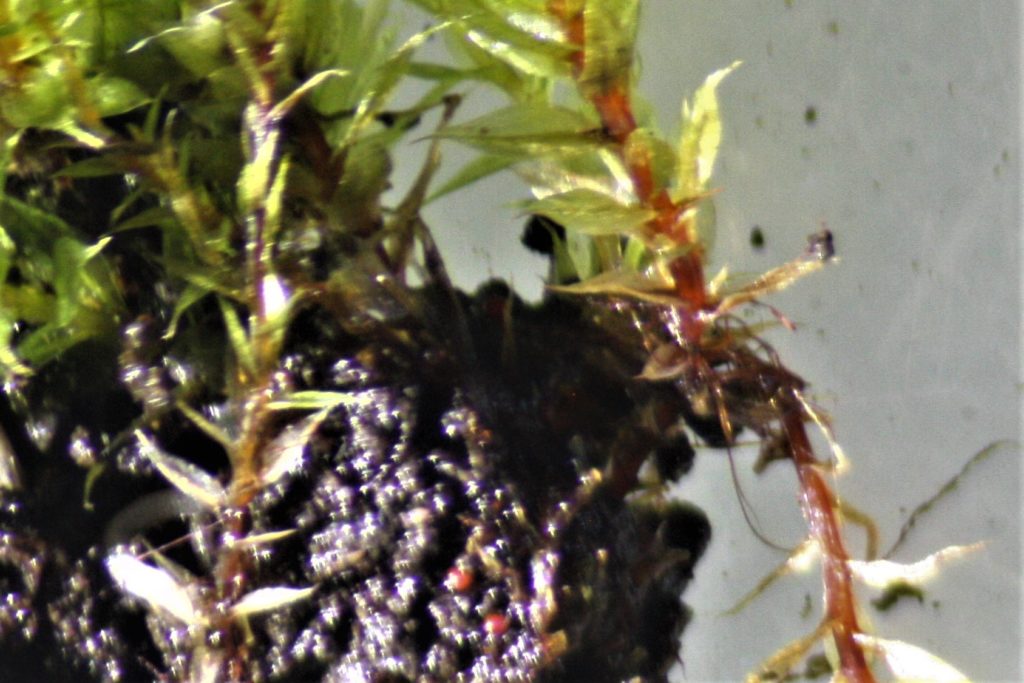
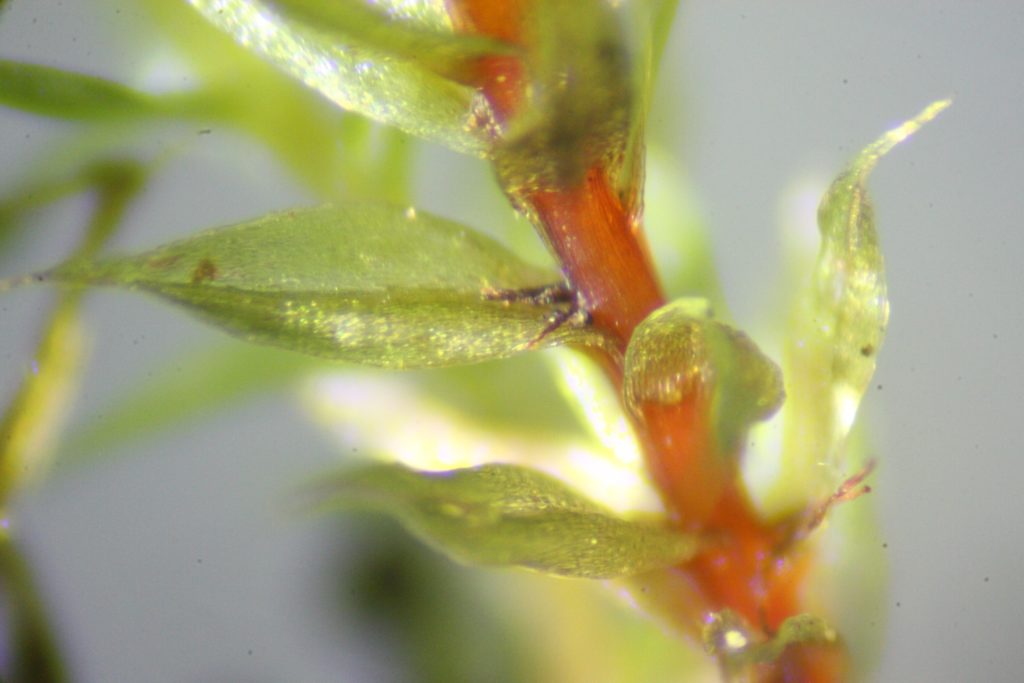
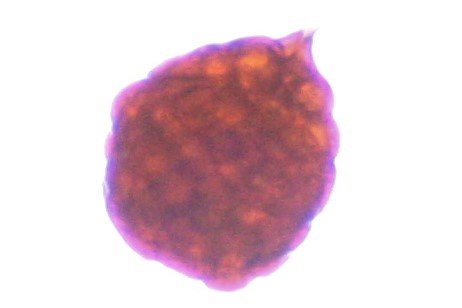
Taking things further, Bryum rubens is in a group of eight Bryum species called the “erythrocarpum” group, all of which look rather similar, live on bare soil such as arable fields, anthills, etc, and all have red, brown or yellow tubers: eight different species, seven of which can be found in Cumbria. These make for really interesting ID challenges, involving microscopic examination of the tubers and other parts.
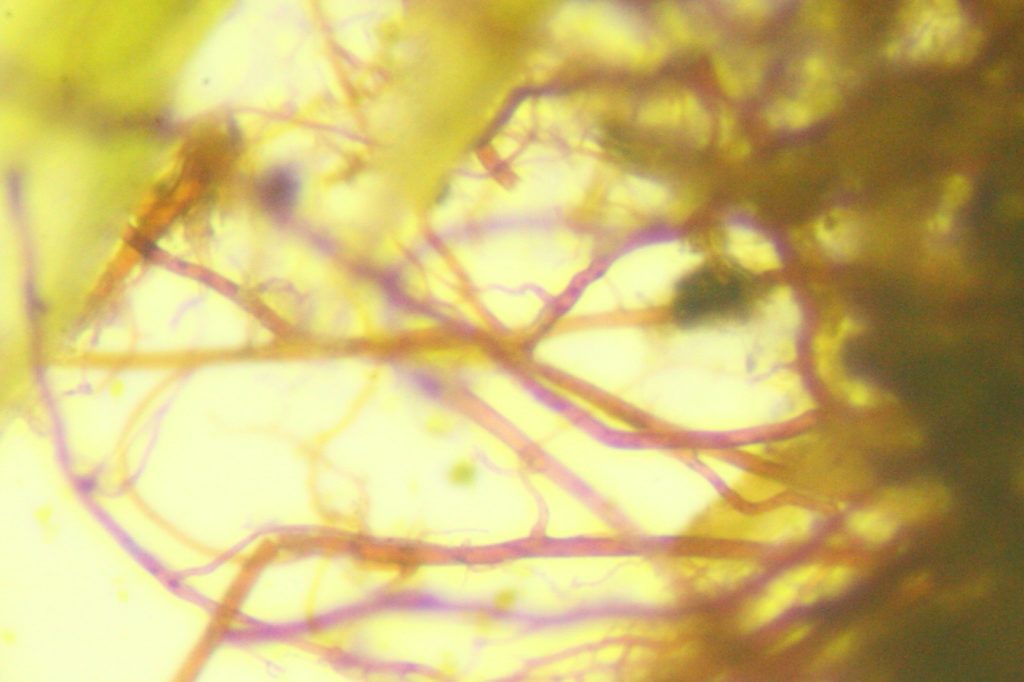
There are only two Bryums with this striking violet colour of the rhizoids: Bryum ruderale (Pea bryum) seen here, has quite rough and knobbly rhizoids under high power (they are “papillose”), whereas the other violet-coloured Bryum, B violaceum (Pill bryum) has smooth-looking rhizoids instead. Both are found in Cumbria.
Bryums are often thought of as a “difficult” group. Well, the rarer ones surely are, but it is rewarding to try to get to grips with some of the commoner ones, and that may lead to finding and recognising the rarer and more tricky ones.
There are 36 species of Bryum in Cumbria, as listed in the NBN Cumbria records (as of Jan21) – see our maps. Well worth keeping an eye out, when walking?
Gary Lawrence
